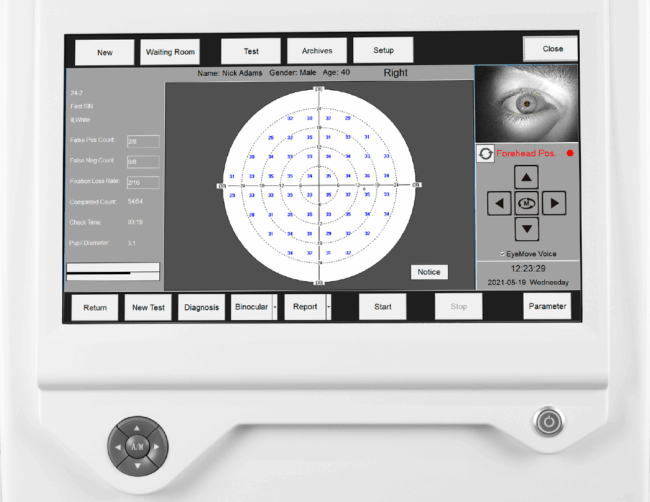Portable vs. Static Field Screeners in Eyecare: A Comparative Overview
20 November 2025

Visual field testing is a cornerstone of modern eyecare, essential for diagnosing and monitoring conditions such as glaucoma, retinal disease, and neurological disorders. Field screeners—devices used to assess a patient’s peripheral vision—come in two main forms: portable and static. Each type offers unique advantages and is suited to different clinical environments and patient needs.
What Are Field Screeners?
Field screeners evaluate the extent and sensitivity of a patient’s visual field. They help detect blind spots (scotomas), peripheral vision loss, and other abnormalities that may indicate underlying health issues.
Portable vs. Static Field Screeners
Portable Field Screeners
Overview
Portable field screeners are compact, lightweight devices designed for mobility and ease of use. They often include tablet-based systems or virtual reality (VR) headsets.
Advantages
- Mobility: Ideal for use in community outreach, home visits, and mobile clinics.
- Space-Saving: Perfect for small practices or multi-use rooms.
- Ease of Use: Often automated and user-friendly, requiring minimal training.
- Cost-Effective: Generally more affordable than full-sized perimeters.
- Patient Comfort: Shorter test durations and less intimidating setups.
Limitations
- Limited Test Range: May not offer the full range of testing protocols available in static systems.
- Lower Resolution: Some models may have reduced sensitivity or fewer test points.
- Battery Dependency: Requires charging or battery replacement for continuous use.
Static Field Screeners
Overview
Static field screeners are traditional, full-sized perimeters typically found in clinical or hospital settings. They offer comprehensive testing capabilities and high precision.
Advantages
- High Accuracy: Superior sensitivity and resolution for detailed visual field mapping.
- Comprehensive Testing: Supports a wide range of protocols (e.g., 24-2, 30-2, 10-2).
- Data Consistency: Ideal for long-term monitoring and comparison.
- Advanced Features: Often includes gaze tracking, fixation monitoring, and customizable test patterns.
Limitations
- Immobility: Fixed in place and not suitable for outreach or mobile use.
- Higher Cost: More expensive to purchase and maintain.
- Space Requirements: Requires dedicated space and setup.
- Longer Test Times: May be less comfortable for some patients, especially the elderly or children.
Choosing the Right Tool
| Feature | Portable Field Screener | Static Field Screener |
| Mobility | Excellent | Poor |
| Accuracy | Moderate to High | Very High |
| Cost | Lower | Higher |
| Ease of Use | High | Moderate |
| Testing Range | Basic to Moderate | Comprehensive |
| Patient Comfort | High | Moderate |
| Ideal For | Outreach, small clinics | Hospitals, large practices |
Both portable and static field screeners play vital roles in eyecare. Portable screeners are ideal for accessibility, outreach, and quick screenings, while static screeners provide the depth and precision needed for comprehensive diagnostics and long-term monitoring. The choice between the two depends on the clinical setting, patient population, and specific diagnostic needs.